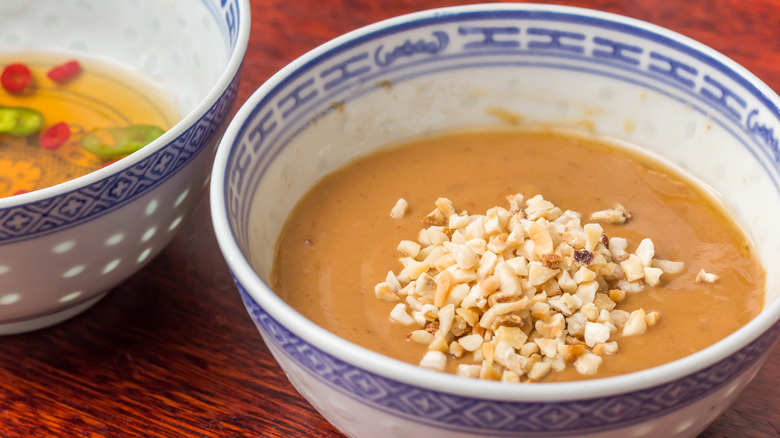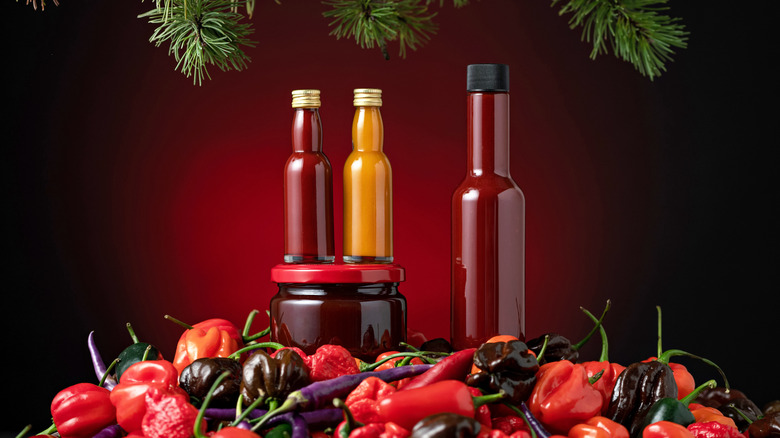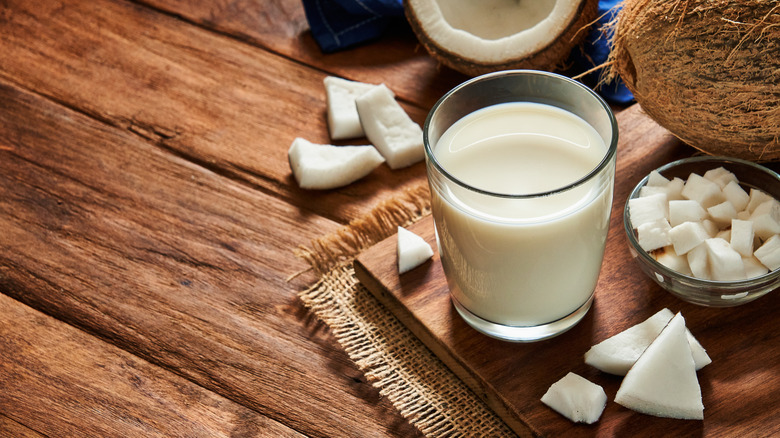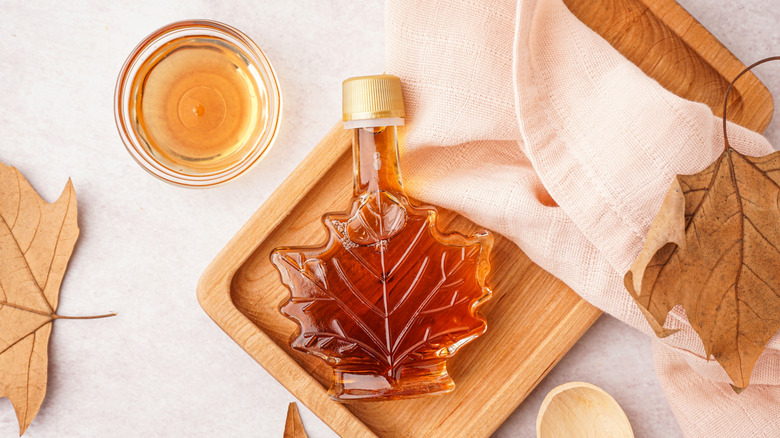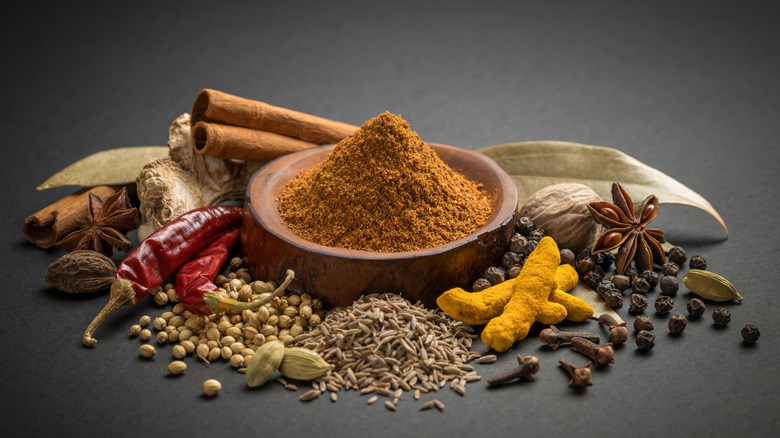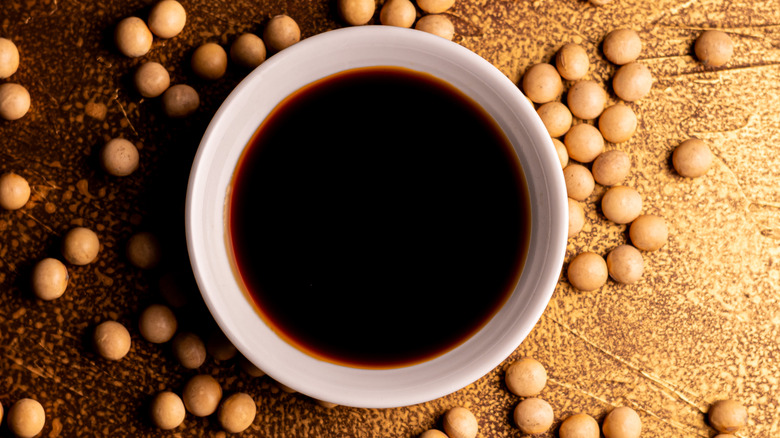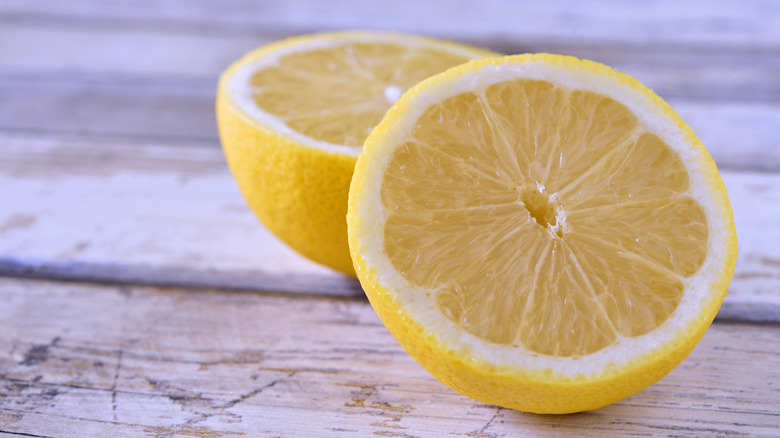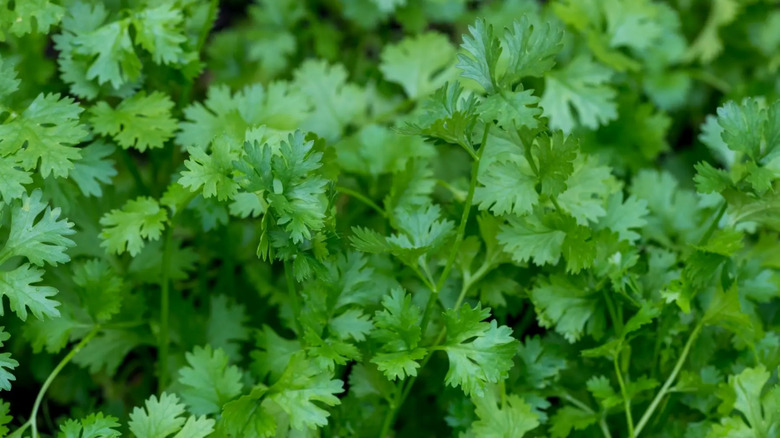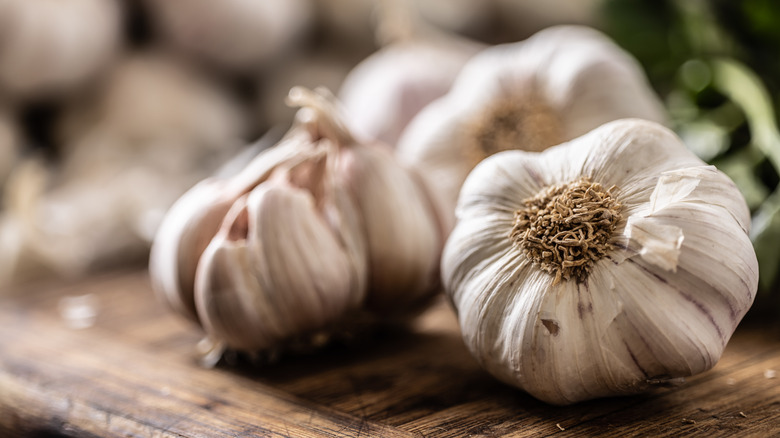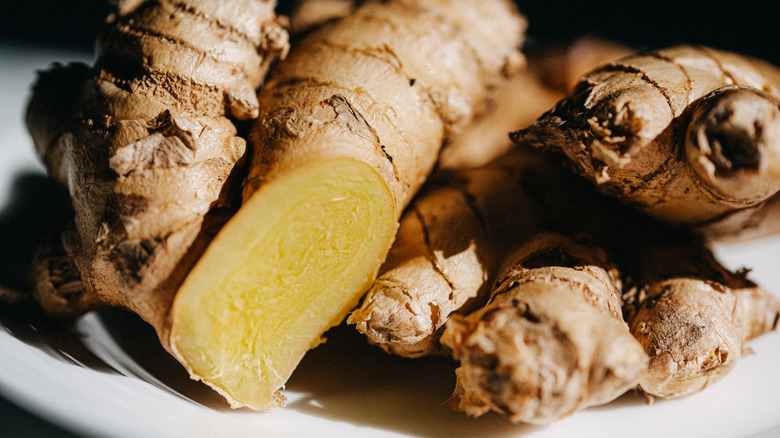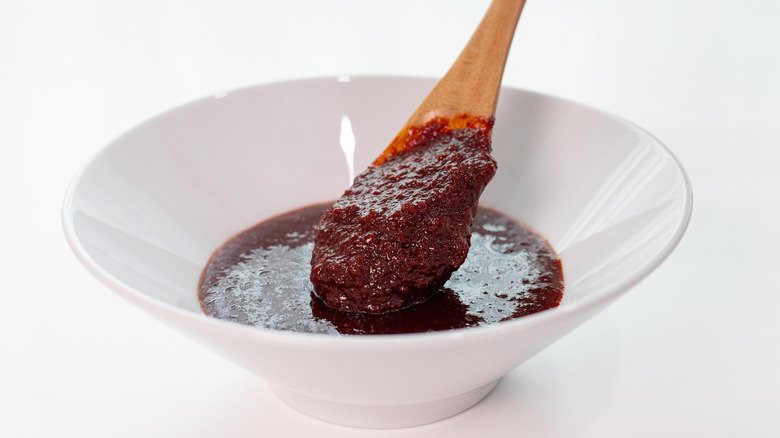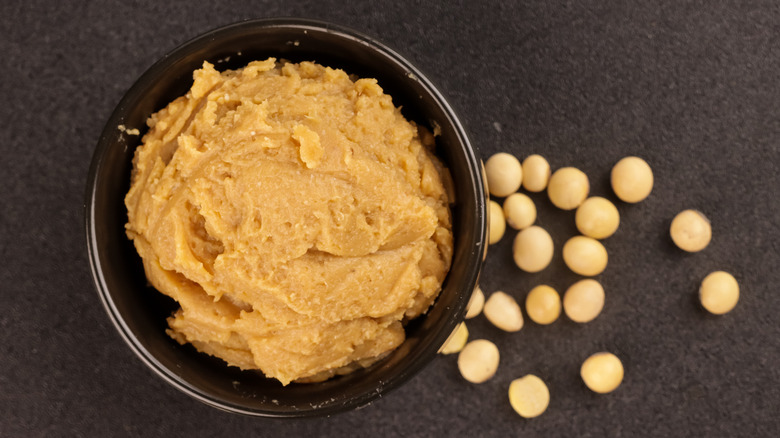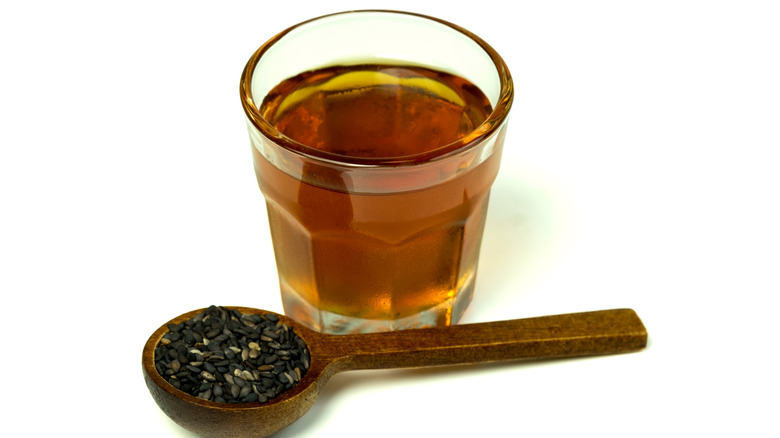12 Simple Ingredients That Will Level Up Store-Bought Peanut Sauce
A jar of peanut sauce is one of those pantry staples that can instantly elevate a meal, whether you're tossing it with noodles, drizzling it over grilled tofu, or using it as a dip for spring rolls. But store-bought peanut sauce can taste flat or one-dimensional, leaving your quick meal less than delicious. However, the good news is you don't need to go to culinary school or buy esoteric ingredients to transform it. With just a few simple ingredients, you can add new layers of flavor and make jarred sauce taste like you made it yourself.
We've explored ingredients and techniques that are usually associated with homemade peanut sauces. This way, you'll end up with something that tastes like it was made from scratch, even if you simply bought it from the grocery store and added a few things. While you can add just one of these ingredients alone, we'd recommend combining two or three extra ingredients to make something truly delicious. For instance, you might want to add coconut milk for richness and creaminess, maple syrup for sweetness, and lime juice for a little brightness to balance it out.
It doesn't have to take much time or effort to make a difference. Here are 12 simple ingredients to level up store-bought peanut sauce. And, while it's not included in our lineup, let's not forget you can always add more peanut butter or chopped roasted peanuts to intensify the flavor.
1. Hot sauce
A splash of hot sauce can work wonders for peanut sauce. The heat doesn't just add spice, it also wakes up the other flavors, making the sauce tastier overall. What's great about this addition is that it takes just a second to add. There's no prep involved and it's liquid so you don't even have to stir it excessively to make sure it dissolves.
Sriracha and peanut butter is a combination you need to try – and that extends to mixing it into peanut sauce. The sweet, garlicky notes of sriracha are an excellent complement to peanut sauce, livening up even a lackluster store-bought offering. However, that's just the tip of the iceberg. There are classics like Tabasco, Frank's, and Cholula, as well as numerous artisan hot sauces from small producers.
Whatever you choose, the goal is to add depth, not overwhelm, so use hot sauce sparingly, bearing in mind how fiery it is. Start with just a splash, stir it in, taste, and increase as needed. Some hot sauces are quite mild and other types will bring tears to your eyes, so there's no set amount to use.
2. Coconut milk
If you've ever had a satay dipping sauce at a Thai restaurant, you've probably noticed how sweet and creamy it is. Coconut milk is often the secret ingredient behind that rich flavor and luscious texture. You can try stirring a few tablespoons of coconut milk into your store-bought peanut sauce to take it up a gear.
Use full-fat coconut milk for the creamiest results. Sometimes, you'll find it has separated, with a thick layer on top and a watery layer below. Scooping the thick, creamy layer and mixing it into store-bought peanut sauce gives you peak results. If you have a can of coconut cream on hand, even better. It's thicker and richer, so a little goes a long way.
It's a good idea to whisk it in until the coconut milk is fully incorporated and the sauce reaches your desired consistency. If you're making a dipping sauce, keep it thick. For noodles or stir-fries, a looser sauce might work better. Coconut milk also mellows out the saltiness or overly sharp flavors some bottled sauces have, so it's smoother and more balanced overall.
Coconut milk is a great addition when paired with lime to balance the sweet, rich notes. Although some people prefer a more straightforward sweet peanut sauce, in which case, you can forgo any citrus or acidic ingredients. A nice hit of ginger and garlic also goes well with coconut milk.
3. Maple syrup
Sweetness is a key component of a great peanut sauce, and while many store-bought options already have some sugar, it's often a one-note sweetness. Maple syrup is different, though. Unlike plain sugar, maple syrup has a rich, caramel-like depth that complements the roasted nuttiness of peanuts. Just a teaspoon or two is enough to level things up and it's something that you probably already have in your pantry.
It's an ingredient in our 15-minute spicy peanut soba noodle bowl recipe. This involves a peanut sauce made from scratch, but doctoring a store-bought sauce with maple syrup is a great option, too. Adding plenty of it can also help transform your sauce into a glaze, ideal for coating proteins.
The beauty of maple syrup is its versatility. It's subtle enough not to overpower but complex enough to make you wonder why your peanut sauce suddenly tastes so much better. And because it's a liquid sweetener, it blends easily without any graininess. Just stir it through and you're good to go.
The sweetness levels out tangy, spicy, and savory notes, so you get a good balance of flavors. But maple syrup isn't your only option. Any liquid sweetener you happen to have on your kitchen shelves will do the trick — agave nectar, corn syrup, sorghum syrup. You can even simply use sugar, though it will need some heat and stirring to get the grains to dissolve.
4. Curry powder
Curry powder might not be the first thing you think of when it comes to peanut sauce, but it's surprisingly good. It adds warmth and spice without being overwhelming. And we love what it adds to a basic store-bought jar. The blend of turmeric, cumin, coriander, and other spices in curry powder pair beautifully with the earthy richness of peanuts.
If you're after a Southeast Asian vibe, try a mild yellow curry powder. For a more intense flavor, a Madras-style curry powder will bring a bolder kick with more spice. Simply sprinkle a little into your peanut sauce when you're heating it, stir well, and taste. You could also use curry pastes — either Indian style pastes, like korma or Balti paste, or Thai red curry paste. Pastes mix into peanut sauce easily and won't leave any graininess.
If you want to really lean into the flavors, add a touch of coconut milk and a squeeze of lime to level things up even more. This makes a creamy, flavorful sauce that's great with noodles, rice, veggies, and so much more. You can use whatever curry paste or powder you have on hand and experiment with the flavors.
5. Soy sauce
Although lots of store-bought peanut sauces already contain soy sauce, adding a dash of your own can make all the difference. Ready-made offerings tend to go easy on salty ingredients to keep the listed sodium level on the packet down. But, the fact is that you need salty ingredients for balance and it's not like you're going to eat a full jar — it's more likely to be divided between a few portions. Soy sauce brings umami, that savory depth that good food needs. Even just a teaspoon can elevate your sauce, making it taste more complex.
Opt for regular soy sauce — like in our Thai peanut sauce recipe – unless you need a gluten-free alternative, in which case use tamari. However, you can experiment with alternative varieties. A splash of dark soy sauce will add a hint of molasses-like sweetness along with its signature deep color. Or, try kecap manis, an Indonesian soy sauce that's even thicker and sweeter.
Whatever you use, whisk it in and taste as you go. You don't want to overpower the other flavors. Soy sauce is particularly great when you're using peanut sauce for stir-fries or noodle dishes. It rounds out the sweetness and nuttiness in the finished dish and goes well with all kinds of veggies and proteins. For an extra layer of flavor, pair the soy sauce with a few drops of sesame oil for a nutty, toasty finish.
6. Fresh citrus juice
Nothing brightens up a dish quite like fresh citrus juice. And store-bought peanut sauce usually needs this. It can be flat and lacking in depth, needing something acidic to improve it. A squeeze of lime or lemon can cut through the richness and help tie everything together. Even orange juice works if you're in a pinch or want to try something different.
Lime is the classic choice for a peanut sauce, especially if you're leaning into Thai or Vietnamese flavors. Its tangy acidity pairs beautifully with the creamy, nutty base. It's key in our easy peanut lime dressing recipe, but also works when added to a ready-made sauce. Lemon works well too, offering a slightly sweeter, less sharp acidity. Or if you want even sweeter, fruitier notes, orange is the way to go. It isn't a traditional choice, but it's quite delicious.
The key is to use fresh juice, not the bottled stuff. All you need is a tablespoon or two and it can transform a just-okay jarred sauce. Add it gradually, tasting as you go, until you hit that perfect balance of creamy, nutty, and tangy. And don't forget to zest the citrus before juicing. If you add a pinch of zest stirred to the sauce, you get an even more bright, aromatic flavor. Fresh, citrusy peanut sauce is a great fit for cold noodle salads or as a dipping sauce for fresh veggies or spring rolls. Sure, it's a simple addition, but you definitely shouldn't overlook it.
7. Cilantro
Fresh herbs have a way of waking up flavors. Adding a handful of chopped cilantro to your peanut sauce instantly makes it taste fresher and more vibrant. Not to mention that it's a simple way of elevating dishes. Peanut sauce speckled with fresh herbs seems like something from a restaurant, not from a jar. Cilantro's citrusy, slightly peppery notes complement the nuttiness of the peanut base beautifully. It helps give the sauce a brightness that cuts through its usual richness.
You can mix the chopped leaves directly into the sauce. Though, if it's going to be heated or cooked with other ingredients for more than a few minutes, add the cilantro toward the end of cooking so it doesn't lose its brightness. If you're a fan of bold flavors, consider adding cilantro stems into the sauce as well. They're packed with flavor and often overlooked. You can chop them finely or blitz them in a blender along with the sauce and any other ingredients you're adding.
Cilantro works particularly well in peanut sauce when paired with dishes that lean into Thai, Vietnamese, or Cambodian flavors. And if you're serving the sauce with a salad, toss in some whole cilantro leaves to carry through the flavor. For those who aren't into cilantro, you could use mint in its place, though the flavor profile will change. A combination of mint and cilantro is also tasty.
8. Garlic
There's almost no savory dish that garlic doesn't improve, so it's something you should absolutely consider adding to jarred peanut sauce. Yes, there's likely some in the recipe already, but store-bought versions often go easy on garlic so as not to overwhelm people who prefer using it sparingly. This gives you a great opportunity to boost the flavor. It's found in most homemade peanut sauces, such as the one used in our peanut soba noodle salad recipe.
Adding freshly minced or grated garlic gives your sauce an aromatic punch that deepens its flavor profile. The sharpness of raw garlic balances the creaminess of the peanuts, creating a robust sauce. However, if you want the complexity without the kick, try sautéing your garlic before adding it to mellow it out.
For the best results, use fresh garlic instead of pre-minced or powdered versions. If you're worried about raw garlic overpowering the sauce and you don't want to get your skillet out, soaking the garlic in lime or lemon juice for 10 minutes will chill the flavor out. Then, you can add both the garlic and the citrus juice to your sauce to really level it up. The beauty of garlic is that it works with so many other flavors, so you could successfully pair it with any other ingredient on this list.
9. Ginger
Fresh ginger is just what a lackluster store-bought peanut sauce needs to take it to the next level. While you won't find it in every grocery store version, or recipe made from scratch, for that matter, it's a natural addition. Its sweet yet warming flavor adds a punch without overwhelming the sauce. It plays well with all the other common flavors in peanut sauce too. It's the way to go for flavorful results.
You can finely mince it or grate it on a microplane grater. The latter gives you particularly fine results that meld into the sauce well. Just don't be tempted to use the powdered stuff. It's not the same. It has its place, but it's not in peanut sauce. If you find peeling ginger way too tricky and annoying, it's so much easier to pull off using a teaspoon. Weird but true.
When adding ginger, start with a relatively small amount and adjust to taste. Begin by grating or mincing about half-an-inch of the root, increasing if needed. Too much can overpower the other flavors, but just the right amount will help elevate things. If you're looking for a smoother consistency, you can even blend the ginger into a paste with a stick blender or mini food processor before adding it. Better yet, make a garlic-ginger paste and add even more flavor.
10. Chili oil or chili paste
If you like your peanut sauce with a kick, chili oil or chili paste can level things up. Supermarket versions often go easy on the spice to appeal to a greater range of customers, so this is your chance to change that. But these ingredients bring more than just heat. They add depth, richness, and complexity. The oil's smokiness or the paste's fermented tang can enhance the sauce and bring a delicious balance of flavors.
Chili oil is a great choice if you want a subtly spicy sauce. It also adds a nice sheen, making your dish look as good as it tastes. Drizzle in a teaspoon or two, stir, and taste until you hit your preferred spice level. Our Thai-inspired crispy tofu wraps include a tablespoon of it in the sauce, but spice levels can be different between oils so your mileage may vary. It's better to start small and have to add more than to use too much and ruin your sauce.
Alternatively, you can opt for a chili paste like sambal oelek or gochujang. Sambal oelek provides straightforward heat and a touch of acidity, while gochujang offers a sweet and savory complexity with a slightly funky flavor from its fermentation. Whatever you end up using, it's wise to be conservative at first and build the spice gradually. Too much heat can overpower the delicate flavors that make peanut sauce a fan favorite.
11. Miso paste
Miso paste is the secret weapon you need to add depth of flavor and umami notes to grocery store peanut sauce. While it's not an everyday ingredient for everyone, if you regularly cook Japanese food, you probably have a tub open in your fridge. This fermented paste is savory and salty, pairing excellently with peanut sauce.
There are different types of miso to experiment with: white miso is mild and slightly sweet, while red miso is richer and more robust. Either one works well, depending on the flavor profile you're aiming for. Simply whisk the miso into your peanut sauce until it's fully blended. If the miso is particularly thick, mix it with a splash of warm water first to ensure it incorporates smoothly.
The savory complexity of the miso complements the nuttiness of the peanuts and adds a subtle richness. However, it does have quite a distinct flavor that can overwhelm your sauce if you aren't careful. It's best to start with around a teaspoon and judge from there whether you need any extra.
12. Toasted sesame oil
When you have a disappointing store-bought peanut sauce on your hands, a dash of toasted sesame oil might be all you need. Also known as dark sesame oil or roasted sesame oil, its nutty, toasty flavor is the perfect thing to complement peanut sauce. A little goes a long way, so start with a splash and see how you go.
This ingredient is particularly transformative when you're using peanut sauce for Asian-inspired dishes. The toasted sesame flavor complements the creamy peanuts while adding a subtle bitterness that balances the sweetness and saltiness of the sauce. We love it for cold noodle salads, dipping sauces, or as a finishing drizzle over stir-fried vegetables.
If you're heating your peanut sauce, you should add the sesame oil at the end of cooking to preserve its delicate flavor. You can also pair it with other bold ingredients like garlic, ginger, or chili oil to level things up even more. It's just a simple addition but it packs a punch. Just don't get confused between toasted sesame oil and the untoasted stuff. Plain sesame oil has barely any flavor — much like grapeseed oil or sunflower oil. It's the toasting process that does the heavy lifting in the flavor department.
